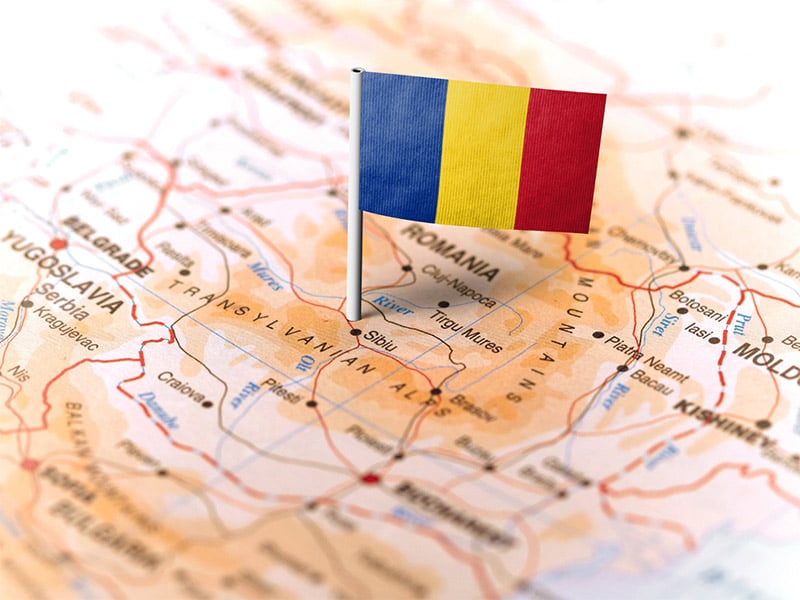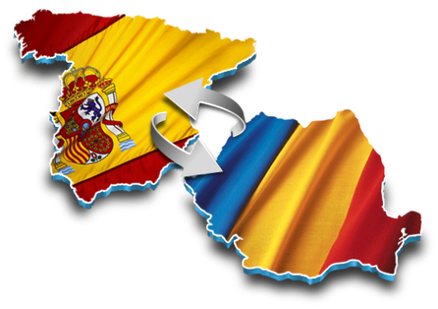Romanian translations are not as prominent as English or German, represent a language rich in heritage and uniqueness. As a Romance language, Romanian shares roots with Spanish, French, and Italian, facilitating certain aspects of translation. However, its historical influences from Slavic, Turkish, and Hungarian languages, make it a borderland language where diverse origins converge, demanding attention and sensitivity during translation.
The value of translating a language that looks in two directions
Romanian translations occupy an intriguing position. On one hand, Romanian shares many structures with Spanish, easing general comprehension between the two languages. On the other hand, it exhibits morphosyntactic, lexical, and phonetic peculiarities that set it apart from its Latin sisters.

For instance, the use of the enclitic definite article (added to the end of the noun) is foreign to Spanish. Additionally, Romanian retains declensions, a feature shared with languages like Latin or German but lost in modern Spanish. These particularities mean that a literal or hasty translation often results in confusion or even inaccuracy.
Therefore, Romanian translations require more than grammatical knowledge. They demand cultural insight, intuition about double meanings and implicit significances, and an understanding of the historical and social contexts of each country.
Romanian translations and migration
In recent decades, millions of Romanians have emigrated to countries like Spain or Italy in search of better job opportunities. This migration has generated a constant exchange of documents, certifications, contracts, and correspondence between the two languages.
Romanian translations have been essential for formalizing work contracts, registering births, obtaining residence permits, or managing school enrollments. Everyday, administrative, and legal matters inevitably pass through the filter of translation. Here, the importance of accuracy becomes evident. A mistranslated word can delay a process, cause misunderstandings, or even lead to legal consequences.
Moreover, on a personal level, translations also connect family stories. Letters from grandparents, recipes passed down through generations, voice messages converted into text, all form part of the collective memory of those living between two languages.
The role of translation in literature and media
Another significant dimension of Romanian translations is found in literature, cinema, music, and digital media. Romanian culture boasts internationally recognized authors like Mircea Cărtărescu or Herta Müller (Nobel Prize in Literature), whose works translated into Spanish have helped bridge diverse audiences.
In this context, translation is not a tool for access but an act of creation. How does one translate a Romanian poem that plays with the sonority of words? How does one adapt an idiomatic expression deeply tied to the Carpathian landscape or a historical reference from communism? Each decision by the translator involves interpretation, and each interpretation is a way of narrating the world.
Furthermore, the rise of digital content has increased the need to translate websites, blogs, social networks, and service platforms. Brands aiming to communicate with bilingual or binational audiences must ensure translations that are faithful to the original message while also sounding natural and authentic to the reader.
Challenges in Romanian translations
One of the main challenges posed by Romanian is maintaining tone and register. The language can vary significantly between formal and colloquial, and often context determines the exact word to use.
Another key point is the translation of legal or technical terms. Although both languages have influenced each other (for example, with linguistic borrowings from Spanish to Romanian in fields like technology or law), each country has distinct legal systems. Therefore, translators must understand not only the language but also the institutional workings of both cultures.
It’s also common for original documents to be written in bureaucratic or administrative language, requiring the translator to “untangle” confusing or poorly written phrases before clearly conveying them in the other language.

Conclusion: translating to understand, not just to communicate
Romanian translations are an exercise in connection. It’s not just about changing words but understanding the cultural, social, and emotional layers behind each text. In a world where millions live between two languages, the translator’s work becomes increasingly relevant: they enable ideas to flow, documents to be validated, stories to be shared, and decisions to be understood.
Ultimately, translating from Spanish to Romanian (and vice versa) is not merely a technical job. It’s a way to build bridges, preserve memory, and open new paths between peoples who, though separated by kilometers and languages, share common concerns, hopes, and needs.
At Max Translation, we understand the complexity and importance of Romanian translations. Our team of professional translators not only masters the language but also possesses cultural and technical knowledge to ensure each text is high-quality, natural, and contextually appropriate.
With over 15 years of experience in the industry, we offer personalized solutions that respect the essence of the original message while making it accessible to the target audience. Contact us today.



